Global Chewing Tobacco Industry Report: Market Leaders and Strategic Procurement Insights
I. Introduction
Chewing tobacco remains a longstanding staple in the global smokeless tobacco market. As market dynamics evolve and regulatory landscapes shift, businesses—whether established manufacturers or emerging brands—must gain a nuanced understanding of popular chewing tobacco brands and best practices for sourcing nicotine in bulk. This report explores the top-performing brands, dissects regional procurement channels, analyzes cost structures, and evaluates strategic choices between white label and OEM manufacturing, providing essential insights for nicotine supply chain management.
II. Profile of Most Popular Chewing Tobacco Brands
A. Brand XXX
Brand XXX has built its reputation on rich flavor profiles and traditional fermentation techniques. Its product line includes long-cut, fine-cut, and plug varieties, all manufactured using premium-grade cured tobacco and natural molasses for a distinctively bold taste. The brand’s enduring popularity is credited to its consistency in product quality and strong distribution across the Southern United States.
Key Highlights:
-
Ingredients: Fire-cured tobacco, molasses, flavoring agents.
-
Manufacturing Process: Traditional fermentation, pressure curing, and aging.
-
Market Positioning: Preferred by long-time users seeking authentic chewing experiences.
B. Brand YYY
Brand YYY caters to a more modern user base, offering flavored options with varying moisture levels and cuts. The brand has embraced cleaner manufacturing practices, including reduced nitrosamine levels, and features transparent labeling—an approach that appeals to health-conscious consumers without sacrificing sensory satisfaction.
Key Highlights:
-
Ingredients: Air-cured tobacco, food-grade sweeteners, artificial and natural flavors.
-
Manufacturing Process: Moisture-controlled blending, pasteurization, and pouching.
-
Market Positioning: Popular among younger demographics seeking flavor variety.
C. Brand ZZZ
Brand ZZZ is best known for its export-driven approach and focus on emerging markets in Southeast Asia and Africa. By tailoring its nicotine content and packaging to regional preferences, the brand has carved out a loyal international customer base.
Key Highlights:
-
Ingredients: Whole-leaf tobacco, clove extract, plant-based binders.
-
Manufacturing Process: Sun-curing, hand-blending, manual packing.
-
Market Positioning: A go-to choice in price-sensitive markets with regional customization.
III. Sourcing Bulk Nicotine for Tobacco Production
Securing high-quality nicotine is foundational to product integrity. Nicotine types vary based on chemical composition and intended use:
-
Freebase Nicotine: Ideal for high-impact delivery in chewables and lozenges.
-
Nicotine Salts: Known for smoother mouthfeel, suited for flavored variants.
-
Whole Tobacco Alkaloids (WTA): Retain minor alkaloids, providing a closer experience to full-leaf tobacco.
When sourcing, businesses must evaluate the nicotine preparation method, focusing on purity (typically 99%+ for pharmaceutical-grade applications), method of extraction (solvent vs. synthetic), and supplier compliance with regional standards. Whether purchasing from a nicotine factory, nicotine manufacturer, or via a liquid nicotine wholesaler, documentation on heavy metals, residual solvents, and alkaloid profiles is essential.
IV. Regional Differences in Procurement Channels
The sourcing landscape varies significantly by region:
-
China: Offers cost-effective, direct-from-factory sourcing. Many nicotine factories operate at scale, facilitating competitive bulk pricing. Example: Snuff Factory – Products.
-
United States: More diversified. Alongside direct purchasing from nicotine manufacturers, well-established distribution networks offer liquid nicotine wholesaler options with warehousing and domestic shipping advantages.
-
Europe: Procurement is often tied to regulatory compliance (e.g., REACH registration), with many businesses opting for EU-based suppliers to streamline customs and ensure product traceability.
Understanding these differences enables better risk management and cost optimization.
V. Cost Composition of Nicotine Products
The total cost of nicotine products depends on several key components:
-
Raw Materials: Tobacco leaf quality and source (e.g., Burley vs. Virginia).
-
Extraction and Processing: Equipment-intensive stages such as purification and distillation.
-
Packaging: Custom pouching, labeling, and secondary packaging for retail or bulk.
-
Compliance & Certification: Testing, documentation, and shipping regulatory compliance.
By evaluating each of these cost factors, businesses can strategically assess product pricing and identify potential cost-saving measures.
VI. White Label vs. OEM: Choosing the Right Option
White Label and OEM approaches cater to different operational needs:
-
White Label: Ideal for businesses looking to enter the market quickly with minimal upfront investment. Products are pre-developed by the nicotine manufacturer, then branded with your logo.
-
Pros: Faster time-to-market, reduced development cost.
-
Cons: Limited customization, brand differentiation challenges.
-
-
OEM (Original Equipment Manufacturer): Suitable for businesses with unique product formulas or market positioning strategies. The product is developed according to your precise specifications.
-
Pros: Full customization, competitive differentiation.
-
Cons: Higher initial costs, longer development timelines.
-
The right choice depends on your business model, product vision, and long-term strategy.
VII. Order, Sample, and Cooperation Process
Establishing a stable partnership with a nicotine supplier begins with a structured approach:
-
Initial Contact: Reach out via supplier portals such as Snuff Factory – Get in Touch.
-
Sample Request: Assess product quality, consistency, and suitability for your formula.
-
Specification Finalization: Determine nicotine type, concentration, packaging, and certifications.
-
Quotation and Terms: Negotiate minimum order quantities (MOQs), delivery timelines, and payment terms.
-
Pilot Order: Test production logistics and quality assurance.
-
Long-Term Agreement: Transition into routine supply with scalability options.
This phased process reduces procurement risks and ensures reliable long-term sourcing.
VIII. Conclusion
From identifying the leading chewing tobacco brands to navigating bulk nicotine procurement, businesses operating in the tobacco sector must align product strategy with sourcing realities. Whether opting for a white label launch or a fully customized OEM solution, informed decision-making can set the foundation for market success. Understanding cost drivers, regional procurement trends, and cooperation frameworks is essential for building a resilient, scalable nicotine supply chain.
For direct inquiries and further assistance with bulk nicotine sourcing, visit Snuff Factory – Get in Touch.


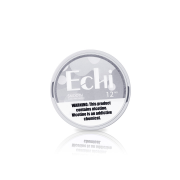
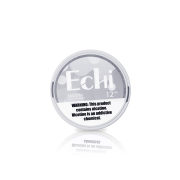

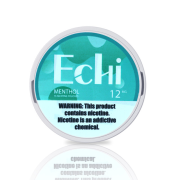
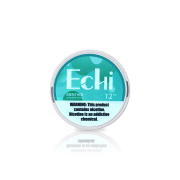
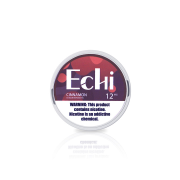


Leave a Reply
Want to join the discussion?Feel free to contribute!